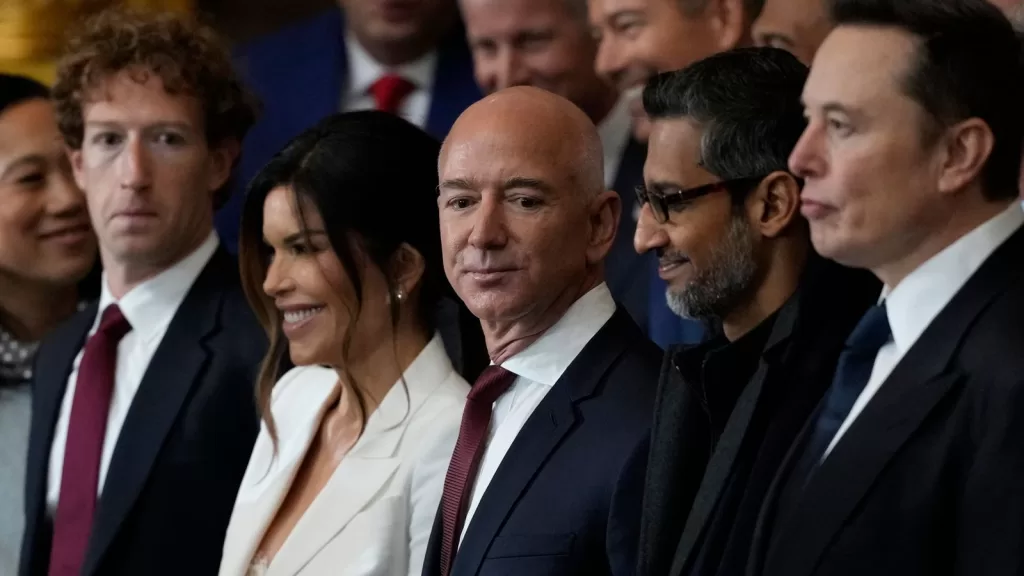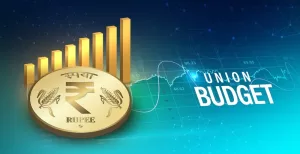❈ ❈ ❈
Revolt of the Rich: Wealthy Elites have Waged a Fifty Year Class War—and Won
Jeremy Kuzmarov
The 2024 election between Kamala Harris and Donald Trump makes clear that the U.S. has two right-wing parties and no effective left-wing opposition.
Trump and the GOP support regressive tax policies and fervent anti-immigrant measures while the Democrats offer a Republican-light domestic economic program combined with hawkish foreign policies that earned Kamala Harris the endorsement of neo-conservative hardliner Dick Cheney.
With both parties competing to screw over working class people, culture war issues have become determinant in elections over the past generation, with the Democrats embracing identity politics in an attempt to mask their commitment to advancing corporate interests almost as egregiously as the GOP.
David Gibbs’s new book Revolt of the Rich: How the Politics of the 1970s Widened America’s Class Divide argues that the roots of today’s dystopian political landscape lie in the successful strategies of wealthy businessmen in the 1970s.[1]
Prior to that time, a social compact prevailed under the New Deal order, lasting roughly from 1932 to 1968, by which the power of corporations was curtailed to some extent by unions and economic policies were adopted by governing elites that contributed to middle-class growth.
Designed largely to avert the prospect of social revolution in the Great Depression, these policies included regulation of the banking structure under Glass-Steagall, progressive income tax rates, a relatively robust social safety net, laws granting unions organizing and collective bargaining rights, and government commitment to funding public education.
After some of the first New Deal measures were passed, J.P. Morgan, the DuPont family and wealthy Texas oil barons funded the Liberty League, which flooded the country with incendiary propaganda accusing President Franklin Delano Roosevelt of bringing socialism to the U.S., and tried to unseat him in a coup.
The coup failed and, when Dwight Eisenhower, a Republican, became president in the 1950s, he preserved core New Deal programs.
Things changed in the 1970s when wealthy businessmen, who had accommodated themselves to the New Deal, became alarmed by declining corporate profits,[2] inflation and the political activism of the 1960s generation.
They began marshaling funds into right-wing think tanks and lobbying groups and, with the support of President Richard M. Nixon, worked to develop a conservative counter-establishment that helped shift the country’s political-economic landscape dramatically rightward.
Right-wing economists associated with the Mont Pelerin Society, including Milton Friedman and Friedrich Hayek, were at the heart of the conservative counter-establishment, along with Christian evangelical preachers like Jerry Falwell and Billy Graham, who mobilized their legions of followers in support of the right-wing power shift.
Friedman’s book Capitalism and Freedom, arguing for deregulation, privatization, and fiscal austerity, was particularly influential in helping to facilitate the displacement of Keynesian thinking and its emphasis on a robust public sector, which predominated during the New Deal era.
Contrary to the depiction of some historians, Richard Nixon was a highly ideological president. He sought to advance a conservative agenda consistent with the worldview of Mont Pelerin Society economists like Friedman who in the 1950s and 1960s was considered “radical right” and part of a “lunatic fringe” to quote Gibbs.[3]
An influential member of the Mont Pelerin Society, George Shultz, a professor of Industrial Relations at the University of Chicago with Friedman who became Secretary of State under Ronald Reagan, served in the Nixon administration as Treasury Secretary, Labor Secretary and director of the Office of Management and Budget.[4] Shultz was one of many Mont Pelerin Society alumni appointed to influential positions in the Nixon administration.[5]
An important element of Nixon’s agenda, according to Gibbs, was to galvanize corporate interests to fund right-wing think tanks like the Heritage Foundation, the American Enterprise Institute and the Hoover Institution, as counterweights to centrist think tanks like the Ford Foundation, Brookings Institution and Council on Foreign Relations.
Further, Nixon championed millionaire-funded conservative lobby groups like the American Legislative Exchange Council (ALEC), which sent brochures to legislators around the country advocating for conservative social and economic policies.
Corporate America’s strategy in this period was showcased in a leaked memo from future Supreme Court Justice Lewis Powell, a Virginia corporate lawyer with close ties to the tobacco industry, calling for a massive influence campaign aimed at Congress, state legislatures and courts and which was to be promoted on television and in the mass media and educational systems. The main goal was to combat liberals, New Left and supporters of consumer rights advocate Ralph Nader who wanted to transform the political-economic system along more socialist lines.[6]
Powell’s memo inspired a flurry of activity by business lobby groups, including the U.S. Chamber of Commerce and National Association of Manufacturers, to transform the political culture of the country in a right-wing direction, including by altering school curricula and financing university faculty.
The ideas of Milton Friedman were disseminated through the Public Broadcasting Service (PBS) in the Free to Choose series, which showcased Friedman’s economics in simplified form for the lay viewer in ten episodes which first aired in 1980.[7]
In addition to influencing the mainstream, there was an effort to build up a distinctly conservative media and to establish media watchdog groups, like Accuracy in Media, that monitored and fought against alleged anti-business press coverage.[8] The watchdog groups pushed mainstream media outlets like The New York Times to adopt a more conservative cast than previously.[9]
A key part of the strategy of “the rich in revolt” was to try to divide the working and middle classes along lines of religion, race and culture. Over time, they pushed identity politics in a way that would prevent an inter-racial movement from developing capable of challenging corporate power.
The Libertarian movement took off in the 1970s with funding from the Koch Brothers, oil billionaires, and other rich donors who aimed to advance a radical free market dogma.
In foreign policy, right-wing businessmen associated with military industries formed lobby groups such as the Committee on the Present Danger, which played up the phony Soviet “threat” and advocated for a major increase in defense spending and an end to Nixon-Kissinger’s détente policies.
They also supported the deregulation of global financial markets and exchange rates and maneuvered to ensure U.S. global dollar supremacy, including by supporting a blood pact with Saudi Arabia by which the Saudis agreed to sell their oil in U.S. dollars in exchange for U.S. weapons and security guarantees.[10]
Neo-conservative intellectuals like Irving Kristol were clever in playing off a growing public consciousness over human rights in the 1970s to advocate for more military interventions to stop human rights abuses, maligning leftist intellectuals like Noam Chomsky who spotlighted the human rights atrocities of U.S. client regimes and political-economic imperatives underlying them.
While many of the neo-con writers were ideologically driven, others were opportunists who were able to parlay their advocacy for higher military budgets and war into lucrative consulting jobs with military contractors or large corporations that profited from U.S. overseas interventions.[11]
The Committee on the Present Danger’s co-founder, David Packard, was also a co-founder of Hewlett-Packard, which did major computing work for the U.S. military and intelligence agencies, and its first co-chairman, Henry H. Fowler, was a partner at the Wall Street investment firm of Goldman Sachs.[12]
Gibbs points out that the New Right’s method of drawing together disparate groups for unified action had no counterpart on the left, which fragmented after the 1960s into single issue groups focused largely on identity politics (race and gender [13]) or environmentalism rather than trying to mobilize the working class.
Collapsing after the end of the Vietnam War, the anti-war movement was anemic in response to the massive military buildup of the late 1970s and early 1980s and the disinformation that accompanied it.
The labor movement had been severely weakened by McCarthy-era purges along with deindustrialization and the shift to a service economy, and many union leaders embraced a militaristic foreign policy.
A sizeable number of leftists at this time were inclined to write off the white proletariat as unreachable and perhaps not worth reaching—a viewpoint advanced by left-wing intellectual gurus like Herbert Marcuse who paved the way for modern-day identity politics.[14]
When Hubert Humphrey and Augustus Hawkins proposed a full employment bill in Congress in 1975, the AFL-CIO opposed it, and women and environmentalist groups offered only minimal support at best, doing nothing to mobilize people to help get it passed.[15]
President Jimmy Carter ended up signing a watered-down version of the bill, which merely encouraged the government to pursue full employment, and the legislation was soon forgotten.[16]
Gibbs presents Carter as a fundamentally conservative leader who set the groundwork for the right-wing “Reagan Revolution” as much as Richard Nixon.
Carter’s close ties to corporate America were apparent in his membership in the Rockefeller-financed Trilateral Commission, which was dedicated to restoring U.S. global supremacy after the Vietnam War.
When he was governor of Georgia, Carter most influential adviser was Charles Kirbo, a senior partner in the Atlanta law firm of King & Spaulding, which represented Coca Cola.[17]
A key event in Carter’s presidency was the 1979 appointment of a Rockefeller protégé, Paul Volcker, to head the Federal Reserve, a decision Gibbs says was instrumental in fulfilling the conservative goal of redistributing wealth and income toward the privileged classes.
Volcker set extraordinarily high interest rates—characterized by German Chancellor Helmut Schmidt as the “highest since the birth of Jesus Christ”—and pushed for the imposition of austerity measures as part of the attempt to curb inflation, which had been artificially induced.[18]
As a result of the “Volcker Shock,” unemployment expanded to 10.8% and living standards were lowered, with Carter basically guaranteeing his own defeat in the 1980 election.
The grain belt of the Midwest was especially hard hit by the Fed’s policies, which produced waves of farm foreclosures and spikes in rates of mental illness and suicides resulting from harsh economic conditions.[19]
The harsh conditions and upward transfer of wealth were made worse by Carter’s deregulation of the airline, banking and trucking industries, the latter of which was transformed into a “sweatshop on wheels.”[20]
Carter’s support for economic austerity measures did not apply to the military as Carter expanded the military budget in his last two years, investing in high-tech weaponry associated with the “Revolution in Military Affairs.”[21]
Further, Carter began arming Islamic fundamentalists in Afghanistan in an effort to draw the Soviets into “the Afghan trap,” and ramped up the U.S. military presence in the Middle East.
Since the 1980s, the neo-conservative movement has completely taken over the U.S. foreign policy establishment with catastrophic results for all of humanity.
Within the U.S., the revolt of the rich described by Gibbs has helped to revitalize Gilded Age-level social inequalities and destroyed the American Dream for younger generations that are saddled with massive student debt.
Interestingly, Gibbs shows in his book how the rich will precipitate societal crisis—both at home and abroad—including by creating artificial recessions, so that they can introduce draconian policies the public would never otherwise support. We have seen this strategy play out most recently in very dramatic form.
Another disturbing focus of Gibbs’s study is on the acquiescence of wide strata of the population to an economic policy program that has harmed almost everyone. Key is the failure of the political left, which continues to make the same mistakes over and over again and to dither as Rome burns.
Notes
1. Gibbs is a professor of history at the University of Arizona who has written previous books on U.S. foreign policy in Congo and the Balkans.
2. Gibbs attributes the declining corporate profits in this period to an artificial rise in oil prices and reduced government spending on transportation infrastructure. David Gibbs, Revolt of the Rich: How the Politics of the 1970s Widened America’s Class Divide (New York: Columbia University Press, 2024), 72.
3. Gibbs, Revolt of the Rich, 48, 50.
4. Gibbs, Revolt of the Rich, 51.
5. Others included John Connally, William Simon, Robert Bork, Herbert Stein and Paul McCracken.
6. Gibbs, Revolt of the Rich, 66.
7. Gibbs, Revolt of the Rich, 69.
8. Gibbs, Revolt of the Rich, 70.
9. Idem.
10. Gibbs, Revolt of the Rich, ch. 5.
11. Gibbs, Revolt of the Rich, 122.
12. Gibbs, Revolt of the Rich, 128. The original Committee on the Present Danger was founded in 1950 by Paul Nitze and other hawkish cold warrior. It was designed as a “citizen’s lobby” to alert the nation to the Soviet “present danger,” and the resultant need to adopt a huge military buildup. The Committee was reestablished in 1976 with the same underlying goals in the aftermath of the Vietnam War, which had fueled isolationist sentiment. The revitalization of the CPD grew out of an independent group called Team B authorized in 1976 by President Gerald Ford and organized by then-CIA chief, George Bush with the aim of promoting alarmist views about the Soviet “threat.” Neoconservatives later associated with the Project for the New American Century such as Paul Wolfowitz were part of Team B. 33 members received appointments in the Reagan adminstation, including CIA Director Bill Casey.
13. Some elements in the feminist movement embraced working-class issues initially, especially in the push for government-funded childcare; however, the working-class focus of the feminist movement quickly dissipated.
14. Marcuse’s function in distancing the New Left from the white working class is viewed in some circles as a coup for the plutocracy and has led to suspicion that Marcuse, who had worked for the Office of Strategic Services (OSS) during World War II, was a CIA “asset.” See Gabriel Rockhill, “The CIA & the Frankfurt School’s Anti-Communism,” The Philosophical Salon, June 27, 2022.
15. Gibbs, Revolt of the Rich, 70.
16. Gibbs, Revolt of the Rich, 106.
17. Gibbs, Revolt of the Rich, 169.
18. Gibbs, Revolt of the Rich, 187, 188.
19. Gibbs, Revolt of the Rich, 189. Instead of gravitating to the left which failed to seize the moment, many displaced farmers organized new political groups and militias that advocated white supremacy, anti-Semitism and anti-government violence.
20. Gibbs, Revolt of the Rich, 180. Additionally, Carter set the groundwork for the “Reagan Revolution” by easing the capital gains tax.
21. See Jeremy Kuzmarov, “The Improbable Militarist: Jimmy Carter, the Revolution in Military Affairs and Limits of the American Two-Party System,” Class, Race and Corporate Power, 6, 2 (2018).
[Jeremy Kuzmarov is Managing Editor of CovertAction Magazine and author of The Russians Are Coming, Again, with John Marciano (Monthly Review Press, 2018). Courtesy: CovertAction Magazine, a project of Covert Action Publications, Inc., a not-for-profit organization incorporated in the State of New York.]
❈ ❈ ❈
Oxfam Says World Ruled by “Aristocratic Oligarchy,” as Billionaire Wealth Surges by $2 Trillion
Andre Damon
The wealth of the world’s billionaires increased by more than $2 trillion in 2024, according to the anti-poverty charity Oxfam’s annual report Monday. Oxfam warned that global society is increasingly dominated by an “aristocratic oligarchy.”
The charity reported that the wealth of the world’s billionaires grew from $13 trillion to $15 trillion in 2024, a rate that is three times faster than in 2023.
The wealth of each of the richest 10 individuals grew by almost US$100 million a day in 2024, on average.
The number of billionaires grew by 204 to 2,769. Collectively, their wealth grew by about $5.7 billion each day, and there were on average four new billionaires created per week.
In its report, Oxfam predicted that the world would have five trillionaires by the end of the decade, compared with its estimate last year that there would only be one.
“The capture of our global economy by a privileged few has reached heights once considered unimaginable,” said Oxfam International Executive Director Amitabh Behar. “The failure to stop billionaires is now spawning soon-to-be trillionaires. Not only has the rate of billionaire wealth accumulation accelerated—by three times—but so too has their power,” he said.
The world’s richest individuals are Tesla and SpaceX founder Elon Musk, with a net worth of $449 billion; Amazon CEO Jeff Bezos, with a net worth of $245 billion; and Facebook CEO Mark Zuckerberg, with a net worth of $217 billion.
The inauguration of Donald Trump prominently featured the attendance of five of the world’s 10 wealthiest people, including Musk, Bezos, Zuckerberg, France’s Bernard Arnault and Google co-founder Sergey Brin.
“What you’re seeing at the moment is a billionaire president taking oaths today, backed by the richest man,” Behar said, referring to Trump and Musk. “So this is pretty much the jewel in the crown of the global oligarchies.
“It’s not about one specific individual,” he added. “It’s the economic system that we have created where the billionaires are now pretty much able to shape economic policies, social policies, which eventually gives them more and more profit.”
The massive enrichment of the financial elite comes amid a spiraling cost-of-living crisis for the vast majority of humanity. While the richest 1 percent of society owns almost 45 percent of all wealth, 44 percent of humanity is living below the World Bank’s poverty line of $6.85 per day.
The Oxfam report also points to the increasingly entrenched character of what it calls an “aristocratic oligarchy.” The report states, “The idea that extreme wealth is a reward for extreme talent is pervasive and strongly reinforced in our media and popular culture. But this perception is not rooted in reality.”
It continued: “In 2023—for the first time—more new billionaires got rich through inheritance than through entrepreneurship. All of the world’s billionaires younger than 30 inherited their wealth.”
The report includes statistics making clear that the wealth of these financial oligarchs is indeed “unfathomable.” It noted, “Even if you saved US$1,000 daily since the first humans, 315,000 years ago, you still would not have as much money as one of the richest ten billionaires.”
It added, “If any of the richest 10 billionaires lost 99 percent of their wealth, they’d still be a billionaire.”
The report related the growth of social inequality to the increasing monopolization of industry. “As monopolies tighten their stranglehold on industries, billionaires are seeing their wealth skyrocket to unprecedented levels. Monopoly power is escalating extreme wealth and inequality worldwide. Monopolistic corporations can control markets, set the rules and terms of exchange with other companies and workers, and set higher prices without losing business.”
As an example, the report noted the staggering figure that “Amazon [owned by world’s second-richest man, Bezos] accounts for 70 percent or more of online purchases in Germany, France, the UK and Spain.”
In a speech upon leaving office over the weekend, US President Joe Biden warned of an “oligarchy taking shape in America of extreme wealth, power and influence.”
The Oxfam report makes clear, however, that this oligarchy is not merely “taking shape,” it has vastly grown its wealth and power under the Biden administration. Biden took office at the height of the COVID-19 pandemic, and the central domestic focus of his administration was bailing out Wall Street and driving workers back to workplaces that were hotbeds of infection, with the aim of reducing costs for major corporations. As a result of its policies, workers’ share of national income fell to the lowest level in decades.
This financial oligarchy uses its control of both political parties to expand its wealth and power at the expense of the working class, whose exploitation forms the basis of their wealth. The incoming Trump administration is a government, as the World Socialist Web Site has explained, “of, by and for the oligarchy.”
Oxfam’s report was published ahead of the annual gathering of the World Economic Forum in Davos, Switzerland. While the report presents powerful and undeniable data about the growth of inequality, it argues that the increasing grip of the financial oligarchy can be broken by “ensuring corporations and the super-rich pay their fair share of taxes.” It does not explain how this is to be accomplished under conditions in which the financial oligarchy controls all of the levers of power.
But as the World Socialist Web Site’s New Year’s statement explained,
The fight against the oligarchy is by its very nature a revolutionary task. Its wealth must be expropriated and its stranglehold over economic and political life abolished. This requires the mobilization of the working class, on a world scale, to take political power, establish democratic control over the process of production, and reorganize society on the basis of socialism—that is, on the basis of social need, not private profit.
(Courtesy: World Socialist Web Site, the online publication of the International Committee of the Fourth International.)




